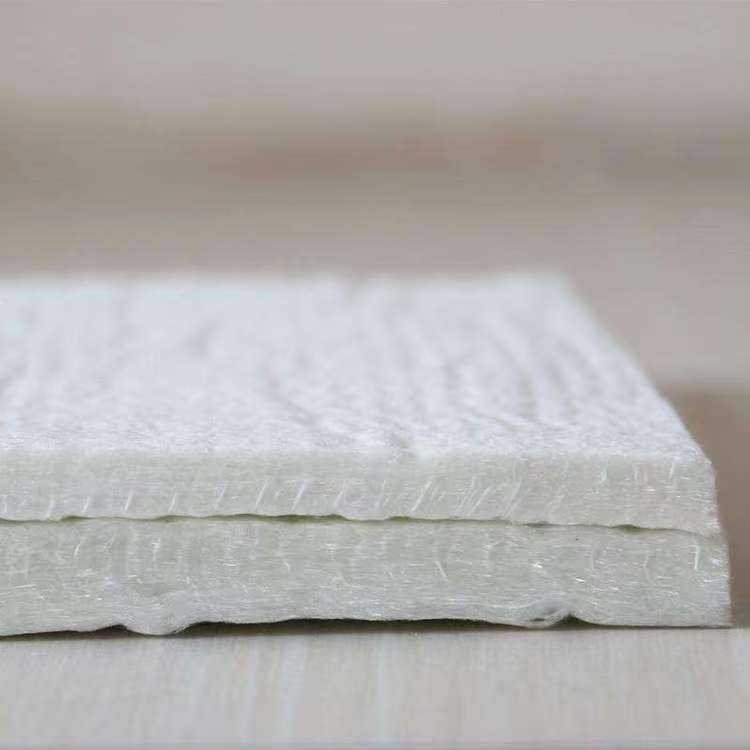Aerogel & Polyurethane Synergy: Nanoscale Insulation and Thermal-Bridge Killers Powering Passive House Revolution
2025-03-07
Aerogel
Passive houses demand near-zero energy loss, but traditional insulation bulks up walls and leaves thermal bridges leaking heat. Aerogel felt (0.015 W/(m·K)) slashes thickness 75% while high-strength polyurethane blocks (≥8 MPa, 0.035 W/(m·K)) neutralize metal penetrations. Real PHI-certified projects in Germany and China cut heating demand 90%, proving this duo delivers space, strength, and sustainability—paving the road to carbon-neutral buildings.
A passive house isn’t just well-insulated—it’s an engineered ecosystem where every watt counts. The Passivhaus Institut (PHI) caps annual heating at 15 kWh/m²—less than a hairdryer running four hours yearly. Achieving that requires airtight envelopes, triple glazing, and ruthless thermal-bridge elimination. Yet rock wool needs 300 mm to hit U=0.15 W/m²·K, and steel balcony brackets punch heat highways straight through walls.
Enter the perfect tag-team: aerogel blankets that insulate like magic and polyurethane blocks that sniper-shoot cold spots. Together, they shrink envelopes, lighten loads, and future-proof structures against climate mandates.
The Passive House Paradox: Thicker Walls, Hidden Leaks
Conventional wisdom says “more insulation = better.” Reality disagrees. A 400 mm EPS layer achieves U=0.10 but steals 0.8 m² of floor area per room. Rebar, bolts, and window frames create linear thermal bridges with ψ-values up to 0.5 W/(m·K), leaking 40% of total heat despite flawless walls. A 2024 Berlin retrofit revealed a 250 mm mineral-wool facade losing 28 kWh/m² annually through anchors alone. The solution demands precision, not bulk.
Aerogel: The Space-Age Envelope Slimmer
Silica aerogel felt—20–40 nm pores trapping 98% air—conducts just 0.015–0.018 W/(m·K) at 10 mm thickness. Five millimeters matches 100 mm rock wool; ten millimeters rivals 200 mm XPS.
Consider load-bearing walls: traditional construction uses 240 mm brick plus 180 mm EPS for a total 420 mm depth. Swap in 20 mm aerogel plus 15 mm render, and depth drops to 275 mm—freeing 145 mm per wall, or nearly one extra square meter of living space in a 100 m² home.
Durability stands firm: 25-year accelerated aging under ISO 11507 shows conductivity rising less than 3%. Compressive creep stays under 1% at 50 kPa, earning PHI structural certification. Hydrophobicity exceeds a 155° contact angle, eliminating mold risk. In a 2025 Shenzhen passive tower, 12 mm aerogel felt on facades slashed peak cooling load 62%, securing China’s 3-Star Green Building label.
Polyurethane Blocks: Thermal-Bridge Assassins
Metal fasteners are passive-house kryptonite. A single M12 bolt through 200 mm insulation leaks 12 W/K. High-density polyurethane blocks—600 kg/m³ minimum, 8 MPa compressive strength—break that chain with 0.035 W/(m·K) conductivity, one-sixth of steel, while bearing 1,200 kN/m² to support PV arrays or balconies.
Installation is straightforward: embed a 50×50×30 mm block within the aerogel layer, anchor the bracket into the block, and ψ-value plummets from 0.42 to 0.06 W/(m·K). A Darmstadt PHI project retrofitted 180 balcony connections this way; heating demand halved from 18 to 9 kWh/m²·a, and interior surface temperatures rose 4.2°C, banishing condensation. In Shanghai, rooftop PV brackets on 40 mm polyurethane blocks cooled attics 5°C in summer, boosting panel yield 3.8%.
Synergy in Action: The Dual-Layer Strategy
Aerogel blankets cover 85% of surface area with broad, ultra-low-conductivity insulation. Polyurethane blocks target the remaining 15%—the penetrations and connections that sabotage certification. No overlap, no waste: aerogel delivers U-values of 0.12–0.18 W/m²·K across walls, while polyurethane keeps point and linear losses below 0.08 W/(m·K). The result is a seamless thermal envelope that meets PHI criteria without compromise.
Policy & Market Tailwinds
Europe’s Energy Performance of Buildings Directive recast, effective 2026, demands facade U-values below 0.4 W/m²·K, making aerogel essential for retrofits. China’s GB/T 51387-2023 Near-Zero Energy standard lists aerogel as preferred, with northern provinces offering 70% subsidies. IDTechEx projects the aerogel construction segment reaching $2.1 billion by 2030, while polyurethane blocks grow at 11% CAGR.
Smart Evolution
Phase-change aerogel integrates microencapsulated PCMs to store solar gain and release it nocturnally. Sensor-embedded polyurethane blocks use strain gauges to feed building information models in real time. Closed-loop systems—solvent-free aerogel plus depolymerized polyurethane—enable fully recyclable facades.
Conclusion: Precision Over Bulk
Passive houses aren’t built with more material—they’re built smarter. Aerogel shrinks the envelope; polyurethane erases the leaks. Homes emerge that heat with a candle, cool with a breeze, and endure a century. As carbon budgets tighten, this nanoscale duo isn’t optional—it’s the new standard.
LATEST NEWS
Why Does Metal Feel Cold and Wood Feel Warm at the Same Room Temperature? Unveiling the Magic of Thermal Conductivity!
2025-11-20
Innovative Aerogel Pipe Insulation Boosting Efficiency in Energy Industries
2025-11-17
Ordering and Specification Guidance for Aerogel Sheet and Pipe Insulation Products
2025-11-17
Luminescent Concrete Transforms Global Architecture with Light and Design Freedom
2025-11-13
Aerogel: The Ultralight Revolution – Transforming Industries with Unmatched Versatility
2025-11-11


